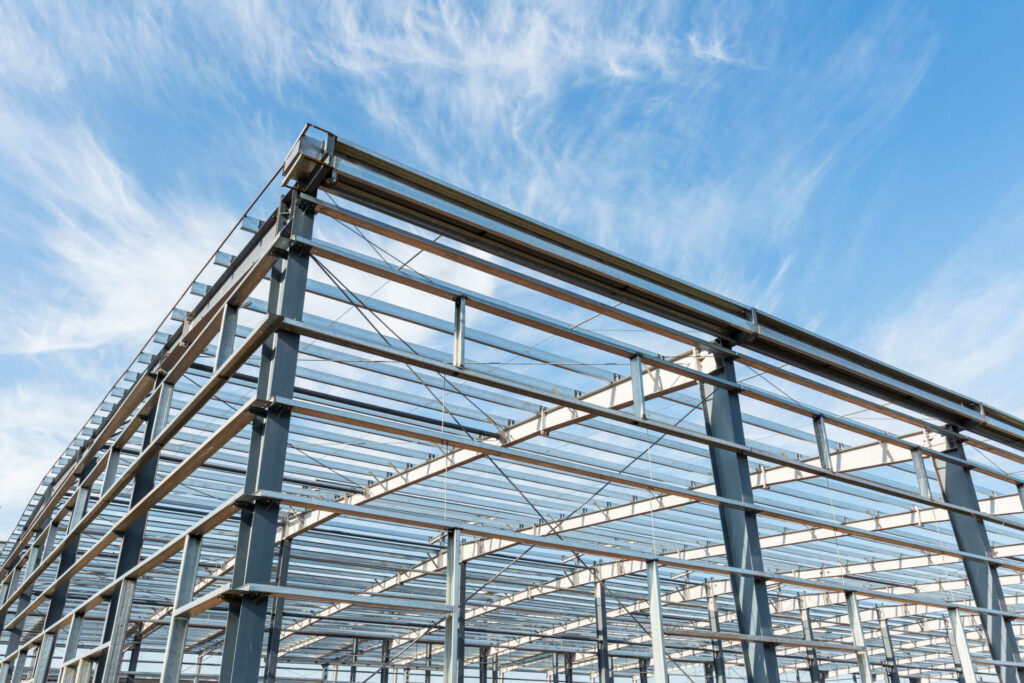
Contents
Custom metal buildings emerge as a compelling choice when considering cost-effective design options. Metal structures’ durability and low maintenance requirements offer long-term savings. The inherent strength of materials like steel provides resilience against various elements, ensuring a lasting investment. Additionally, the efficiency of assembly and customization options contribute to their appeal. But what sets them truly apart? Let’s explore the unique features that make custom metal buildings a smart financial decision for your next project.
Key Takeaways
- The unmatched durability of the steel ensures long-term cost efficiency.
- Customizable design options reduce operational and maintenance expenses.
- Quick assembly and pre-engineered components save on construction time and labor costs.
- Energy-efficient features lower operational expenses over time.
- Structural versatility adapts to changing needs, maximizing cost-effectiveness.
Benefits of Custom Metal Buildings
When considering construction options, custom metal buildings offer unmatched durability and cost-efficiency. The durability advantages of custom metal buildings stem from the strength of materials like steel, which can withstand harsh weather conditions, resist pests, and have a long lifespan. Unlike traditional building materials, such as wood, metal doesn’t rot, warp, or require frequent maintenance, making it a reliable choice for long-term structural integrity. This durability reduces maintenance costs, saving you money in the long run.
In addition to their durability advantages, custom metal buildings offer aesthetic appeal. With advancements in design and construction techniques, metal buildings can now be customized to suit various architectural styles and preferences. Whether you prefer a modern, sleek look or a more traditional design, metal buildings can be tailored to meet your aesthetic needs. The versatility of metal allows for unique shapes, sizes, and finishes, giving you the freedom to create a building that stands out while still being durable and cost-effective.
Cost Efficiency of Metal Buildings
Custom metal buildings present a compelling option for superior cost efficiency in construction projects due to their long-term financial benefits. Metal buildings stand out for their quick assembly and installation process when considering the construction timeline. The components are pre-engineered to fit together seamlessly, reducing construction time considerably compared to traditional building materials. This efficiency can lead to lower labor costs and faster project completion, saving you money in the long run.
Material durability is another key factor contributing to the cost efficiency of metal buildings. Steel, the primary material used in custom metal buildings, is known for its strength and longevity. Unlike wood or other materials that may degrade over time, steel is resistant to pests, mold, and fire. This durability translates to lower maintenance costs and fewer repairs over the building’s lifespan. Additionally, metal buildings are highly customizable, allowing you to optimize the design for energy efficiency and further reduce long-term operational costs.
Design Flexibility in Metal Buildings
Design flexibility in metal buildings allows for versatile and innovative structural configurations to meet diverse project requirements efficiently. The ability to customize metal buildings with creative customization and structural versatility is a key advantage for architects, engineers, and project managers. Here is a table highlighting the key aspects of design flexibility in metal buildings:
| Design Aspect | Description | Benefits |
|---|---|---|
| Customization | Tailoring the building to specific needs and preferences. | – Enhances aesthetics and functionality. |
| Versatility | Adapting the structure to various sizes, shapes, and designs. | – Accommodates different project requirements. |
| Innovative Solutions | Implementing cutting-edge design ideas and solutions. | – Allows for unique and standout architectural features. |
Creative customization empowers you to add personal touches and unique features to your metal building, creating a space that resonates with your vision. Metal buildings’ structural versatility ensures that your project can easily adapt to changing needs or constraints, providing a cost-effective solution that meets your requirements effectively. By leveraging design flexibility, you can achieve a tailored and functional metal building that fulfills your practical needs and aesthetic preferences.
Sustainability Features in Metal Buildings
To enhance the sustainability of metal buildings, incorporating eco-friendly features is paramount for minimizing environmental impact and promoting energy efficiency. Regarding energy efficiency, metal buildings offer a range of sustainable features that align with green architecture principles. One key aspect is the insulation system. Using high-quality insulation materials, metal buildings can reduce heat transfer and air leakage, resulting in lower energy consumption for heating and cooling purposes.
Additionally, energy-efficient windows and doors can enhance the building’s overall energy performance. These windows and doors help minimize heat gain during hot weather and heat loss during colder periods, thereby reducing the reliance on artificial heating and cooling systems. Installing reflective roofing materials can also help decrease the heat island effect often associated with urban areas, contributing to a cooler building environment and reducing the need for extensive air conditioning.
Furthermore, utilizing renewable energy sources such as solar panels on the roof can help significantly lower the building’s carbon footprint while providing a sustainable energy alternative. By integrating these energy-efficient and sustainable features into metal buildings, you can’t only reduce operational costs but also demonstrate a commitment to environmentally conscious practices in construction and design.
Factors Influencing Metal Building Costs
Factors influencing metal building costs vary greatly depending on the project specifications and materials selected. Construction materials play a significant role in determining the overall cost of a metal building. The type of metal chosen, such as steel or aluminum, will impact the price due to material costs and availability variations. Additionally, the quality and thickness of the metal sheets used for the building’s structure will influence the final expenses.
Labor costs are another important factor affecting the total cost of a metal building. Skilled labor is required for the design, fabrication, and installation of a custom metal building. The expertise and experience of the workers involved in the construction process will affect labor costs. Factors such as the complexity of the design, the size of the building, and any customization requirements will also impact the amount of labor needed, thereby affecting the overall cost of the project.
When considering the cost of a metal building, it’s essential to carefully evaluate the construction materials and labor expenses. By understanding how these factors influence costs, you can make informed decisions to ensure your project stays within budget while meeting your design and quality requirements.
Recap
Custom metal buildings offer a cost-effective design solution with unmatched durability and longevity.
Choosing metal buildings is a smart investment for any architectural project with their customizable nature, sustainability features, and lower maintenance costs.
Recent Posts
What Are Affordable Metal Garage Options for Farms?
Imagine you’re managing a bustling farm like Smith’s Acres, where every inch of space counts.
What Are Your Options for Agricultural Metal Storage?
When you’re exploring agricultural metal storage options, it’s crucial to take into account the various
How to Choose Versatile Agricultural Metal Structures
When you’re considering versatile agricultural metal structures, it’s essential to start by evaluating your specific




